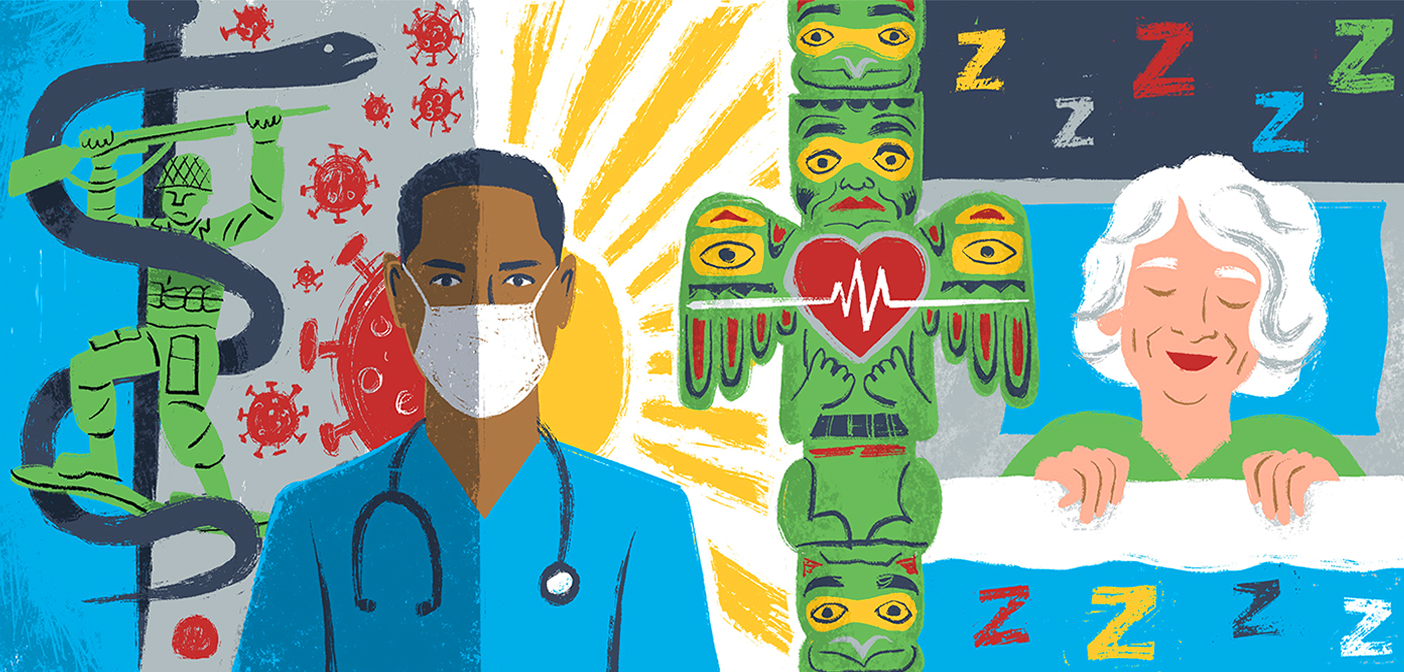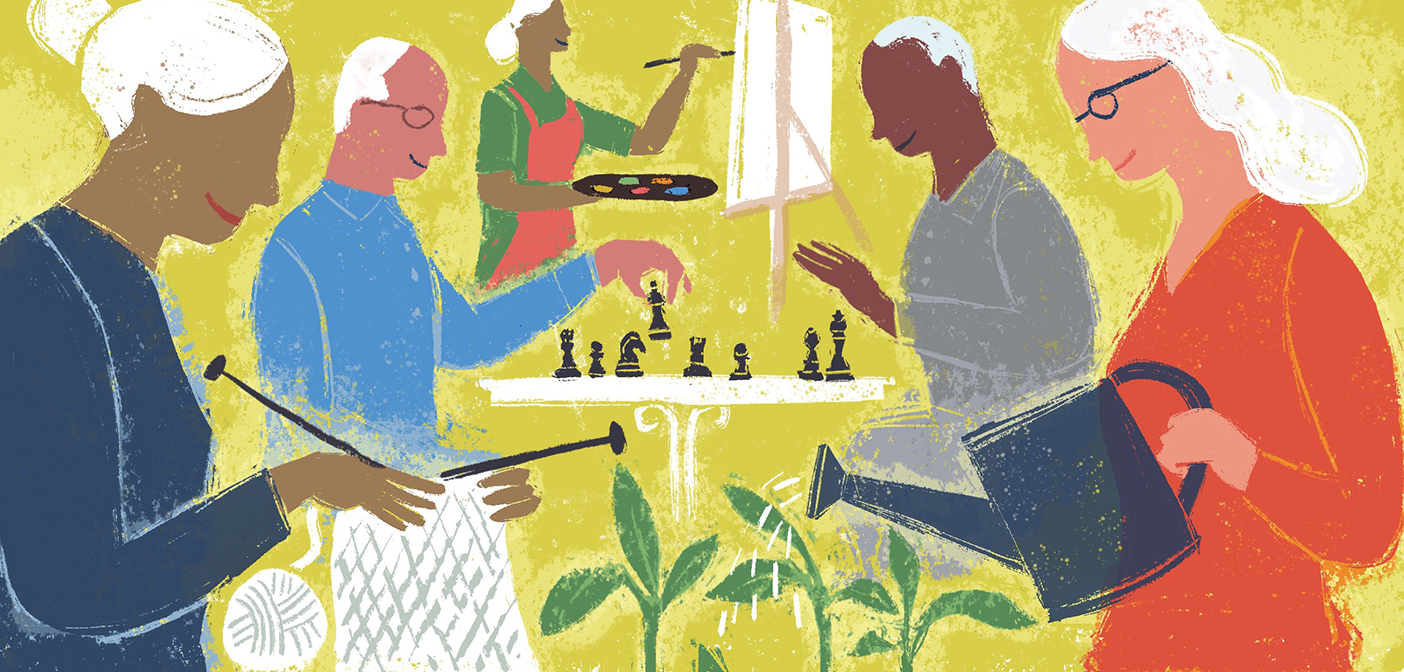By: Janiece Taylor, PhD, RN, FAAN
It was my in-laws 50th wedding anniversary. We were in full celebratory mode, eating and enjoying the company of family. During this momentous occasion, my husband’s cousin, “Cousin T,” was in attendance, and he had recently had his leg amputated and was now wearing a prosthesis.
My husband’s younger cousin, “Little Taylor,” was very curious about it.
Little Taylor finally gave in to her curiosity and she lifted Cousin T’s pant leg. She touched and closely inspected his prosthetic leg with awe, confusion, and amazement. My husband, and many of the onlookers in our family, were shocked and at a loss of what to do. But Cousin T showed much patience and grace, and let Little Taylor take her time to carefully examine the prosthesis. Eventually another cousin took Little Taylor aside to explain what the prosthetic was, how it worked, and that Cousin T was still able to walk just like anyone else.
The Americans with Disabilities Act (ADA) helps make things more accessible for Cousin T, which helps him better adjust to his permanent disability. It was signed into law 30 years ago, on July 26, 1990. And it was a historic moment in our nation’s history when the barriers people with disabilities face were addressed. We have come a long way in society in the past 30 years, but we still have more work to do.
Research is one of those areas.
People with disabilities experience life course stressors and health concerns that are present in other populations (e.g. caregiving and parenting responsibilities, discrimination, violence, need of health promotion and self-management strategies), yet they often are excluded from mainstream research studies. Researchers may fail to include people with disabilities in studies out of fear or lack of understanding, like how the family felt seeing Little Taylor approach Cousin T. But this leaves a gap in the literature. We can close this gap by ensuring that people with disabilities are included in as many research projects as possible and not just research projects that are about their disabilities. It is crucial that our research is inclusive and accessible for people with various types of disabilities, including those with hidden or non-apparent disabilities such as disabilities in mental health, cognition, sleep, or learning.
To ensure that research studies are inclusive, we must strive to do the following whenever possible:
- Ensure that the locations of research studies are accessible to visit for people with various types of disabilities (e.g. hearing impairments, visual impairments, mobility limitations);
- Ensure that our materials and methods are accessible for people with various types of disabilities;
- Use inclusive and appropriate language in study materials including study inclusion criteria and study recruitment materials;
- Identify any accommodations that will be necessary for people with disabilities before conducting in person/virtual research study visits (g. additional materials/skills needed for venipunctures, availability of closed captions);
- Include people with disabilities on community advisory boards for research studies;
- Adapt educational materials to meet the needs of people with learning disabilities; and
- Make accommodations (e.g. confidentiality measures) that allow caregivers or attendants to accompany people with disabilities to study related sessions.
It is imperative that researchers include the voices of people with disabilities in mainstream research, and not as an afterthought. Consider the Biblical passage in Mark 12:31:“Love your neighbor as yourself.” We would never expect someone to speak for us without including us because no one else can truly describe what it is like to walk in our shoes. So as researchers it is imperative we demonstrate that we value the voices of people with disabilities as we value our own.
Reflecting on Little Taylor’s story, her approach may not have been the best. But her older cousins did not waste the opportunity of a teachable moment. As researchers, we can use our platforms to encourage dialogue surrounding the needs of people with disabilities and include them in as many of our research studies as possible. This can help ensure that, 30 years after the ADA, we continue to move forward in helping people with disabilities achieve better health outcomes, independence, and access to needed resources.
Read more:
ABOUT THE AUTHOR
 Janiece Taylor, PhD, RN, FAAN, is an assistant professor at the Johns Hopkins School of Nursing, one of the Associate Directors of Johns Hopkins School of Nursing RESILIENCE center, and faculty in the Center for Innovative Care in Aging. She explains. “The aging process, especially when combined with disabilities, is not being researched enough.” Dr. Taylor’s research is focused on developing interventions to improve health outcomes among women and minorities aging with disabilities and chronic pain.
Janiece Taylor, PhD, RN, FAAN, is an assistant professor at the Johns Hopkins School of Nursing, one of the Associate Directors of Johns Hopkins School of Nursing RESILIENCE center, and faculty in the Center for Innovative Care in Aging. She explains. “The aging process, especially when combined with disabilities, is not being researched enough.” Dr. Taylor’s research is focused on developing interventions to improve health outcomes among women and minorities aging with disabilities and chronic pain.

 Growing CAPABLE
Growing CAPABLE Summer Research Roundup 2023
Summer Research Roundup 2023 Summer Research Roundup 2022
Summer Research Roundup 2022 Aging? Do What You Love and Live Better
Aging? Do What You Love and Live Better Vision for the Future
Vision for the Future







